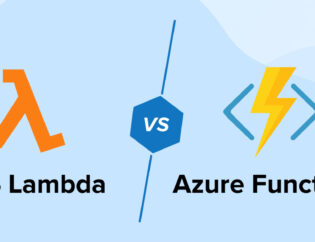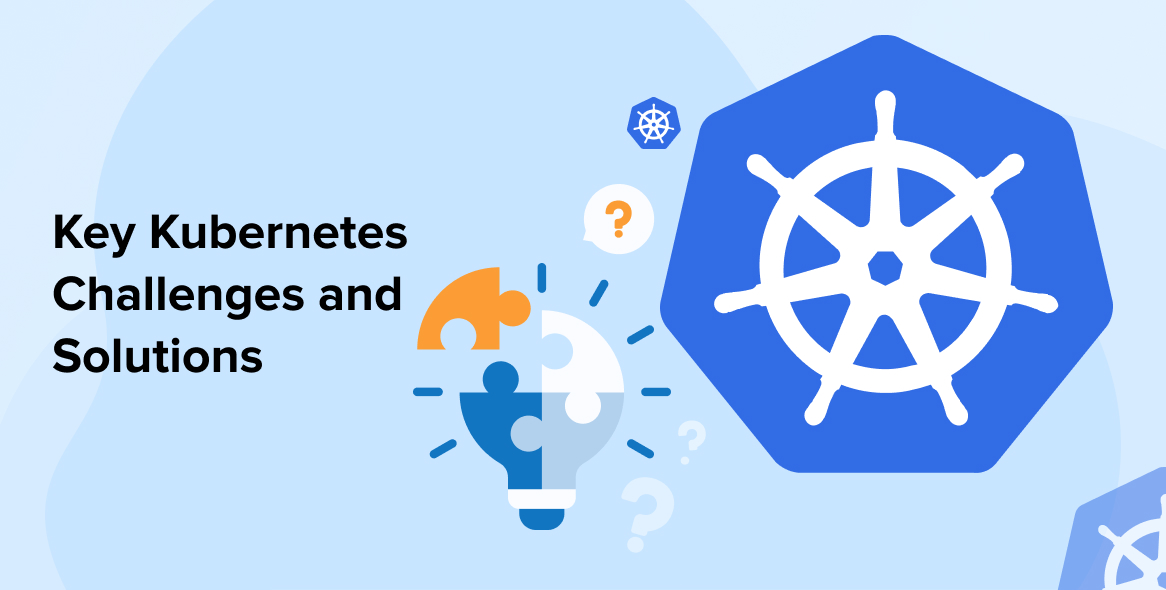
With the increasing use of containers for application deployment, Kubernetes, one of the best portable, open-source, and container-orchestration platforms, has become very popular for deploying and managing containerized applications.
The main reason behind it is that early on, companies ran applications on physical servers and had no defined resource boundaries for the same. For instance, if there are multiple apps that run on a physical server, there are chances that one app takes up the majority of the resources and others start underperforming due to the fewer resources available. For this, containers are a good way to bundle the apps and run them independently. And to manage the containers, Kubernetes is majorly used by Cloud and DevOps Companies. It restarts or replaces the failed containers which means that no application can directly affect the other applications.
Basically, Kubernetes offers a framework that runs distributed systems and deployment patterns. To know more about Kubernetes and key Kubernetes challenges, let’s go through this blog.
1. Kubernetes: What It can Do & Why Do You Need It?
Traditionally, companies used to deploy applications on physical servers which had no specific boundaries for resources and this led to an issue in which the performance of apps might suffer because of other apps’ resource consumption.
To resolve this, bundling the apps and running them efficiently in containers – is a good way. This means that, in the production environment, the software development team needs to manage the containers that run the applications, and after that, the developers need to ensure that there is no downtime. For instance, if the container of the application goes down, another one needs to start. And handling this behavior can be really easy with Kubernetes. It offers a framework that can run distributed systems flexibly.
Kubernetes platform takes care of the app failover & scaling, offers deployment patterns, and much more. Besides this, Kubernetes has the capability to provide:
| Area of Concern | How can Kubernetes be helpful? |
|---|---|
| Self-healing |
|
| Storage Orchestration |
|
| Automate Bin Packing |
|
| Automated Rollbacks and Rollouts |
|
| Service Discovery and Load Balancing |
|
2. Key Kubernetes Challenges Organizations Face and Their Solutions
As we all know, many organizations have started adopting the Kubernetes ecosystem and along with that they are facing many Kubernetes challenges. So, they need a robust change program that is – a shift in mindset and software development practices which comes with two important standpoints – the organization’s viewpoint and the development teams’ viewpoint. Let’s go through the key Kubernetes challenges and possible solutions:
2.1 Security
One of the biggest Kubernetes challenges users face while working with Kubernetes is security. The main reason behind it is the software’s vulnerability and complexity. This means that if the software is not properly monitored, it can obstruct vulnerability identification. Let’s look at where K8s best fit within the entire software development process for security:
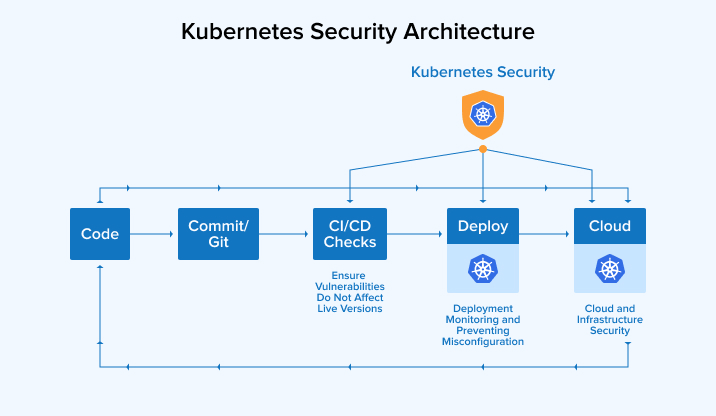
1.1 Check Whether Microservices Architecture Best Fits the Requirements
Microservices architecture should be planned and designed based on the custom business requirements. The first step in the process is to decide whether Microservices architecture will best fit for the custom requirements or not. So, make sure to study your requirements carefully. It will help you to decide which architecture pattern you must follow. Also, don’t forget to determine that your program can be segmented into value-added operations while maintaining its key features and functionalities by executing the necessary research.
Let’s understand this through an example where you want to build a server-side enterprise application which has the below mentioned requirements :
- Supports various clients including native mobile applications, desktop browsers, and mobile browsers.
- Allows 3rd party application integration.
- It should be capable of handling requests by executing the business logic, accessing databases, sending/receiving messages with other systems, and returning an HTML/XML/JSON response.
- Includes all the necessary business operations and services. They are complex in nature.
To develop an application that follows above requirements, illustrate an architecture that structures the application as a coordinated group of loosely coupled, and collaborating services. And each Service should be:
- Highly maintainable and testable – For faster development and deployment.
- Loosely coupled with other services – So, it won’t affect other services and allows each team to work independently on their separate service(s).
- Independently deployable – To deploy services without coordinating with and impacting other team members.
- Have the ability to be developed by a small team – which is important for better productivity.
These we can achieve through Microservices architecture as it offers numerous benefits such as:
- Enhanced maintainability – each service is somewhat small which can be easily understood and changed.
- Better testability – as we mentioned, the services are smaller, so they can be tested thoroughly and quickly.
- Better deployability – you can independently deploy each service.
- It allows you to manage development efforts around autonomous teams. Each team has the ability to develop, test, deploy and scale its services without depending on other teams.
Now, let’s see when not to use microservices architecture. Monolithic architecture can be a better alternative when
- The application complexity is less. It should have a small number of functionalities to include and be simple to develop.
- The development team size is small.
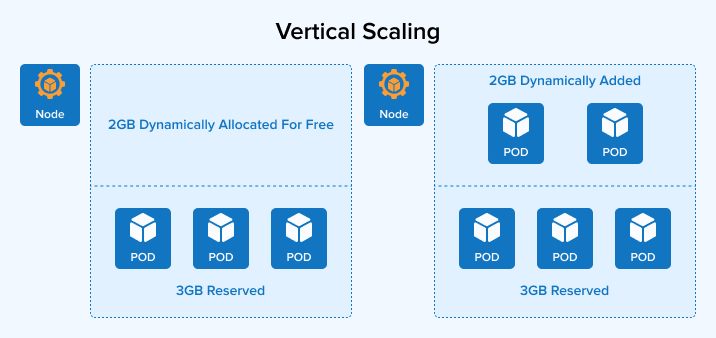
- K8s also supports horizontal auto-scaling. New nodes will be added to a cluster whenever CPU, RAM, Disk Storage, I/O reaches a certain usage limit. New nodes will be added as per the cluster topology. Let’s understand it from following image:
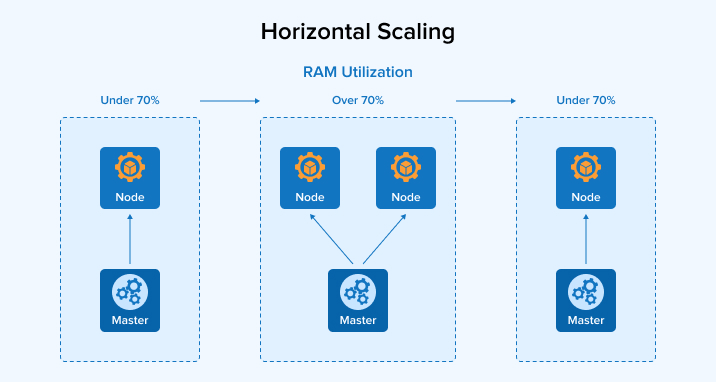
2.7 Deployment
Last challenge on our list is the deployment of containers.
Companies sometimes face issues while deploying Kubernetes containers and these issues occur because Kubernetes deployment requires various manual scripts. This process becomes difficult when the development team has to perform various deployments using Kubernetes manual scripts. And this slows down the process. For such issues, some of the best Kubernetes practices are:
- Spinnaker pipeline for automated end-to-end deployment.
- Inbuilt deployment strategies.
- Constant verification of new artifacts.
- Fixing container image configuration issue.
- Kubernetes enables solving issues about fixing node availability.
Common Errors Related to Kubernetes Deployments and Their Possible Solutions:
| Common errors | Possible Solution |
|---|---|
| Invalid Container Image Configuration |
|
| Node availability issues |
|
| Container startup issues |
|
| Missing or misconfigured configuration issues |
. |
| Persistent volume mount failures |
|
3. How have Big Organizations Benefited after Using Kubernetes?
Here are some of the instances that show that big organizations have benefited from Kubernetes:
| Organization | Challenge | Solution | Impact |
|---|---|---|---|
| Booking.com | After Booking.com migrated OpenShift to the platform, accessing infrastructure was easy for developers but because Kubernetes was abstracted, trying to scale support wasn’t easy for the team. | The team created its own Vanilla Kubernetes platform after using Openshift for a year and asked the developers to learn Kubernetes. | Previously, creating a new service used to take a few days but with containers, it can be created within 10 mins. |
| AppDirect | AppDirect, the end-to-end eCommerce platform was deployed on tomcat infrastructure where the process was complex because of various manual steps. So better infrastructure was needed. | Creating a solution that enables teams to deploy the services quicker was the perfect solution, so after trying various technologies, Kubernetes was the choice as it enabled the creation of 50 microservices and 15 Kubernetes clusters. | Kubernetes helped the team of engineers to have 10X growth and it also enabled the company to have a system with additional features that boost the velocity. |
| Babylon | Products of Babylon leveraged AI and ML but computing power in-house was difficult. Besides, the company also wanted to expand. | The best solution for this was to get apps integrated with Kubernetes and make the team get turned towards Kubeflow. | Teams were able to compute clinical validations within mins after using Kubernetes infrastructure and it also helped Babylon to enable cloud-native platforms in various countries. |
4. Conclusion
As seen in this blog, Kubernetes is an open-source container orchestration solution that helps businesses manage and scale their containers, clusters, nodes, and deployments. As this is a unique system, developers face many different Kubernetes challenges while working with its infrastructure and managing and scaling business processes between cloud providers. But once they master this tool, Kubernetes can be used in a way that offers an amazing, declarative, and simple model for programming complex deployments.
